How to make German Shepherd back legs stronger: exercises, diet. German Shepherds are notable for having weak hips. This is due to several reasons, among which the inclined back. This can lead to hip dysplasia. Read more about how to make the German Shepherd’s back legs stronger in this article.
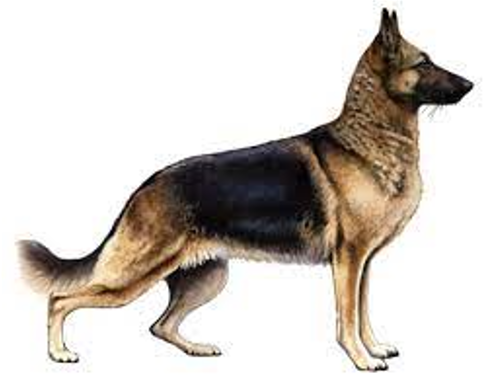
 Tips for strengthening German Shepherd back legs.
Tips for strengthening German Shepherd back legs. 
If you want to understand how to make the German Shepherd’s back legs stronger, there are a few basic guidelines. They consist of diet, exercise, and the introduction of special supplements. More details about all the tips you can find below.
Maintaining a quality diet
Many German Shepherd owners are wondering, how can I strengthen my dog’s back legs? First, you need to make sure that the animal is in a slender shape. It is recommended to feed your pet with quality products, which contain the maximum amount of protein, vitamins, and nutrients.
It is recommended to introduce into the diet natural products that contain enough proteins. Calorie content should be good to maintain the harmony and health of the pet.
Active adults should consume 3.5 cups of dry dog food each day. If the animal is elderly, then it is better to reduce the amount to 2.5 cups. For every pound of weight, there should be 35 calories.
The amount of protein in products should vary from 18 to 22%. Older German Shepherd dogs require 28-32% protein. However, it is better to check with an experienced veterinarian for exact information, who selects a menu based on the health and physique of the German Shepherd dog.
What products for gaining muscle mass and making German Shepherd’s back legs strong and healthy? If you properly compose the diet of the German Shepherd dog, all products are aimed at strengthening the muscles. It is appropriate to give raw food, homemade food, or dry food.
There are several dry dog food options that most veterinarians recommend for the German Shepherd puppy:
- Bully Max Muscle Building Food.
- Feed from Maximum Bully.
- Purina Dog Food Pro Plan Sport Formula.
- Food from Crave is high in protein.
- Dry food Victor Classic Hi-Pro Plus.
- Protein-rich food – Blue Buffalo Wilderness.
- High Carbohydrate Food – Visionary Pet Keto Natural Beef.
If you want to strengthen the German Shepherd’s back legs, it is recommended to combine several types of food. Only in this way can you achieve the desired effect.
If the main goal is to gain German Shepherd weight, you should pay attention to the following food options:
- Miracle Vet high calorie;
- a Grain-free feed with chicken protein – Crave;
- Purina Pro Plan 30/20 Sport high protein;
- Earthborn without cereals;
- Nature’s Variety Instinct Ultimate Grain Free with Duck Protein;
- Bully Max, which belongs to the super-premium class;
- Canned Ziwi Peak with beef from New Zealand;
- Canine Chicken Meal Feast;
- Nulo Freestyle Limited+ Salmon Flavored Grain Free;
- Grain-free food Solid Gold Barking at the Moon with a high-protein content;
- Nutro ULTRA superfood for puppies;
- Wild Frontier without grains, with a taste of a turkey and a duck;
- No flavored with trout and sweet potato.
Maintaining supplements
If the dog’s mobility problems are caused by arthritis and hip dysplasia, special joint supplements should be introduced into the German Shepherd’s diet. They stimulate the growth of muscle mass and strengthen the German Shepherd’s back legs. Choose supplements that contain glucosamine.
This substance has several properties, including building cartilage strength, as well as lubricating the joints. As you know, as the German Shepherd ages, the body cannot fully produce glucosamine. If you introduce a special additive, this gap is filled.
It is appropriate to choose supplements in which glucosamine works together with chondroitin. The combination of substances reduces the degree of pain in dogs developing osteoarthritis. The best option is the Lively Paws Mobility Supplement, developed by veterinarians.
Is it possible to build muscle in a dog without supplements? Some dogs can build muscle mass without supplements. This process is quite complicated, however, very real. If you do not want to use supplements, you have to properly compose your pet’s diet so that the foods are rich in protein. For every pound of German Shepherd weight, 1 gram of protein is required.
You should also increase the physical activity of the German Shepherd, and establish a rest regimen. However, you should not overload your German Shepherd with exercise, so as not to aggravate already existing health problems.

Try to play with the German Shepherd every day and teach the new tricks and commands. The dog must be in good psychological health. If the animal is depressed, or tired from hard work, the muscles are not built up. On the contrary, it can lead to progressive disease.
How to make German Shepherd back legs stronger
What exercises to enter for a German Shepherd healthy? 
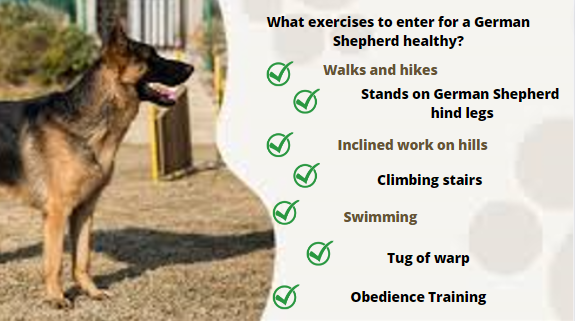
Many are interested in the question, how do I fix my German Shepherd’s hips? To strengthen the German Shepherd’s back legs, it is important to make the right exercises. They are recommended to be combined with daily walks. All exercises should be directed to the back legs and thigh area.
German Shepherds are very active, so you need to train them for about 1-2 hours every day. This makes German Shepherd’s legs slim and improves their health. Proper training prevents obesity, which can later lead to deterioration in the condition of the joints.
Walks and hikes
It is important to do cardio with the German Shepherd every day. This category includes walks and hikes. The older the dog, the longer you need to walk with it. Older individuals should slightly reduce the load.
Stands on German Shepherd hind legs
To strengthen the dog’s back legs, you need it to stand on them. At first, you can support her front paws a little. If you train with a German Shepherd every day, after a month the dog can stand on its back legs. Regularly increase the amount of time your dog needs to stand on its hind legs.
Proper performance of this exercise helps to strengthen the back of the thigh. You can walk the German Shepherd a little while it stands on its back legs. Increasing the difficulty results in faster results.
Inclined work on hills
First, you need to find a hill that is close to the house. After that, you should train the German Shepherd dog in several ways:
- lifting uphill in reverse;
- lifting from a sitting position on a hill;
- trotting up.
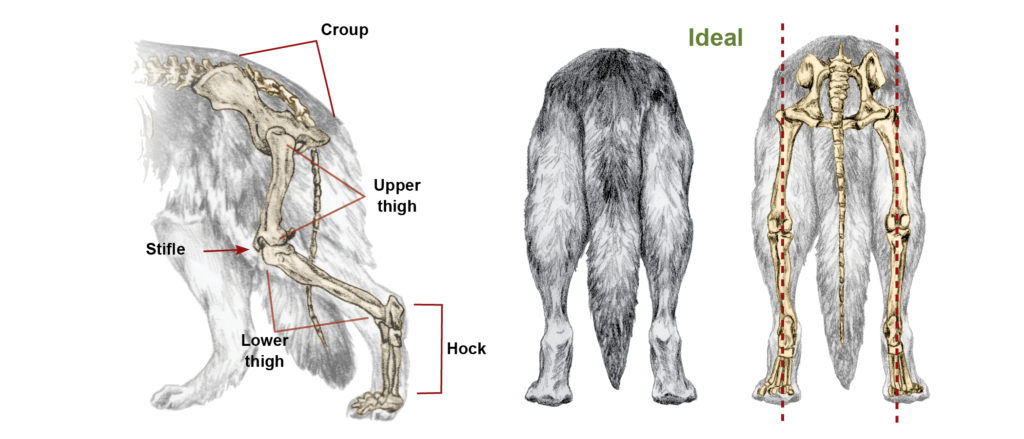
Climbing stairs
If you live in an apartment building, you can train your German Shepherd dog to climb stairs. This helps strengthen the back legs. However, do not overload the animal. This exercise is appropriate for young dogs over 1 year old.
Climbing stairs for puppies is contraindicated. After all, this can cause the improper formation of joints, which in the future causes serious problems for the German Shepherd’s health.
Swimming
Swimming has a positive effect on the state of the joints. This exercise helps develop the German Shepherds’ back legs. To make your dog’s back legs stronger, you can do the wading exercise. This is because there is a lot of resistance in the muscles.
You can submerge the treadmill in water and have your dog walk on it. This helps to pump up the buttocks. This improves intelligence, as well as balance. If the animal has problems with the joints, it is recommended to avoid excessive loads and jumps. Indeed, in the future, this may cause more serious problems.
Tug of warp
As you know, German Shepherds bite quite often and spoil shoes or furniture. This behavior can be used to strengthen the back legs. To do this, you should play a game with your pet – tug of war.
Such a game improves the psychological and physical health of the animal and also helps to improve muscle mass. Almost all German Shepherd owners play this game with their pets.
Schutzhund
This version of the exercise is appropriate for strong German Shepherds. It has a little extreme. Before embarking on this sport, it is recommended to consult a cynologist and veterinarian.
It is best to leave the animal in the hands of an experienced trainer. This makes muscle strengthening the animal without negative consequences.
Adventures
German Shepherds are quite inquisitive and take great pleasure in exploring new places. If you are planning a trip or adventure, take your pet with you. Long walks not only help strengthen the paws but also have a positive effect on the psychological health of the dog.
Agility Training
To teach dog agility, no special equipment or study of the features of the game is required. There is always a chance for improvisation. Almost all German Shepherd owners and experienced trainers are engaged in agility training with animals.
Thanks to properly built training, not only the back legs are strengthened. The animal learns new tricks to improve its health condition.
Obedience Training
To improve and strengthen the muscles of the dog, it is important to engage in obedience exercises with it. They also help to improve the psychological health of the animal. And in the future, it is easier for you to find a common language with your pet.
Use of various toys
If you decide to get a German Shepherd, be sure to prepare some toys for the dog. They help build muscle mass as well as learn new tricks. The more often the animal is played with toys, the better its behavior is.
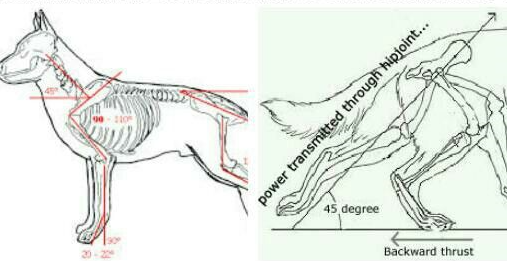
Injury prevention 
During training, make sure that the animal is not injured. If you notice that something is wrong with the dog, you should immediately take it to the veterinarian. You cannot let everything take its course because this can cause other health problems.
Special pillow
On the market, there are special pillows for dogs that support the joints in the pelvis and legs. At the same time, they prevent the rigidity of muscle tissue. Often, the veterinarian advises the use of such pillows if there is a knee hygroma.
Acupuncture
This is a new technique that is aimed at the prevention of the hip joint. The essence of the technique is that needles are stuck into different parts of the dog’s body. Do not do this on your own, so as not to harm the dog. All work must be done by an experienced craftsman.
Surgical intervention
If the animal has been diagnosed with bone problems, it is required to contact a professional surgeon. Surgery may be required.
Often this is required if the animal is severely injured, or the bone has shifted.
Causes of weak German Shepherd’s back legs 
It is not uncommon for German Shepherd owners to wonder, why do my German Shepherd’s back legs give out? This may be due to numerous reasons. However, the main thing is that breeders have always focused on the external qualities of the animal and not functionality.
Sloping back
Historically, breeders have always focused on what external parameters the dog differs in. Therefore, little attention was paid to the performance of the animal. Almost all dogs of this breed are distinguished by their signature back tilt.
This caused the animal’s hips and hind legs to change. The hind leg becomes bent, which provoked an increase in cases of hip dysplasia. If the dog has a sloping back, then the likelihood of joint diseases increases.
Degenerative myelopathy
Often this disease is encountered by individuals whose age is more than eight years. Degenerative myelopathy is a neurological disease that develops due to damage to the spinal cord. The more the disease progresses, the weaker the paws become. This often causes paralysis.
It is quite difficult to determine the disease in the early stages. After all, at first, the symptoms resemble classic arthritis or hip dysplasia. The main symptom of the disease is that the animal begins to stagger when walking, and constantly stumbles.
Problems with urination and defecation are not excluded. Today, this disease is untreatable. Prevention requires daily exercise.
Hip dysplasia
German Shepherds often face dysplasia of various joints. This is a genetic disease that can be identified even in puppies. The main symptom is that the development of the pad and the femoral cavity occurs at different rates.
The joints begin to rub against each other, causing them to become weak. If you try to correct the problem, the development of degenerative joint disease is not excluded. Osteoarthritis may also develop. It becomes more difficult for the animal to move because the hind legs weaken.
Osteoarthritis
This disease is progressive and causes loss of cartilage in the German Shepherd’s joints. The disease develops in older individuals and causes hip dysplasia.
The hind legs of the animal become weak, and the gait begins to change. Dogs lean more and more on the ground. To prevent illness, it is important to engage in constant training, as well as regulate nutrition and the introduction of special supplements.
The need to strengthen the hind legs of a German Shepherd
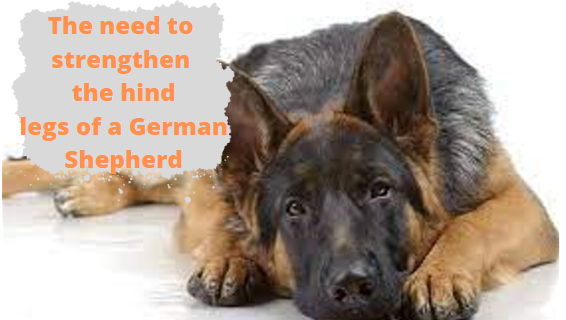
Strengthening the hind legs in dogs should occur for several reasons, including:
- Improves overall mobility. It is easier for the animal to run and walk.
- It is easier for the dog to run upstairs and down hills.
- It is easier for the animal to play with the owner.
- Disease prevention.
- Reduction of painful sensations during the disease, as well as the prevention of paralysis.
- Increased life expectancy. The animal becomes more and more active.
- Preservation of balance and stability.
- Prevent the dog from having to use a wheelchair.
- The animal becomes more and more self-confident.
Does a dog need a massage?
If you massage your dog periodically, it can bring huge benefits, especially for the hind legs. It should be noted that this is not a panacea for solving the problem. Massage helps to relieve pain that occurs in the hip joint.
Massage helps to relax the muscles so that they begin to move freely. Therefore, massage is appropriate to apply if the dog has been injured, or a muscle rupture has occurred.
Massage can improve blood flow so that the body receives more oxygen. It helps to remove toxins from the body, which helps to relax the muscles, as well as alleviate pain.
The structure of the muscles of the hind legs
If you decide to train your dog, it is important to focus on a few muscles. The biceps femoris is the largest muscle that goes into the hamstring. It is safe to say that this is a compound muscle that helps to extend the hip joint.
The biceps femoris controls the knee joint. German Shepherds use their biceps to raise their paws when they go to the toilet. If the hind leg is in contact with the ground, then walking or running begins.
The gluteus medius muscle is slightly smaller than the previous one. It provides stability to the hip part of the body. The gluteus medius muscle has several functions, including:
- hip extension;
- prevention of lateral rotations during jumps;
- rotation of the hip towards the midline.
It is important to pay attention to the wide lateral muscle. It is located on the side of the thigh and is part of the quadriceps muscle group. Helps to extend the knee joint when the dog runs in a canter or trot style. The muscle stores and releases energy when the dog moves.
Symptoms of problems with the hind legs 

Symptoms that indicate the failure of the dog’s hind legs can appear quite quickly, or slowly. It all depends on why the weakness develops. If the dog’s hind legs are weak, several symptoms indicate this, namely:
- problems with coordination and idiocy;
- balance problems and difficulty walking;
- unusual gait;
- stiffness when lifting;
- indecisiveness when performing a jump or movement;
- paralysis, which may be temporary or permanent;
- problems with urination;
- set of body fat and loss of muscle mass;
- fatigue.
When do problems start?
Many are interested in, at what age German Shepherds start having hip problems. It is important to understand that joint problems do not depend on age. Problems can be noticed even in a 4-month-old puppy. You can often notice symptoms of osteoarthritis or hip dysplasia.

As you can see, there are several ways to make the German Shepherd’s hind legs stronger. It is necessary to make the right diet, exercise, and supplements. It is best to combine all methods to achieve the best result.
*some information in the article was added from this resource
- German Shepherds Temperament: Are They Good With Kids?
- How to Care for Your 8 Week Old German Shepherd Puppy
- What is a German Shepherd dog? Full guide dogs about this dog breed 2024
- How Many Years Does a German Shepherd Live: Unveiling the Lifespan of a Beloved Canine Companion
- How to deshed a German Shepherd: Your step-by-step guide to taming the shedding beast in your German Shepherd

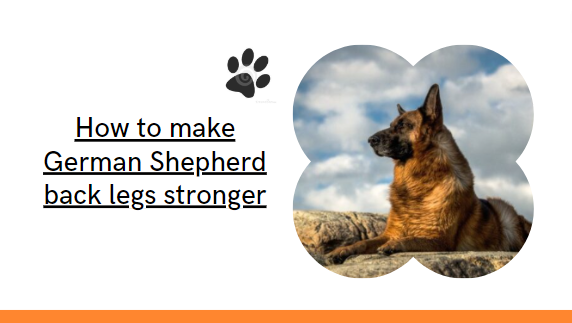
 Tips for strengthening German Shepherd back legs.
Tips for strengthening German Shepherd back legs. 
